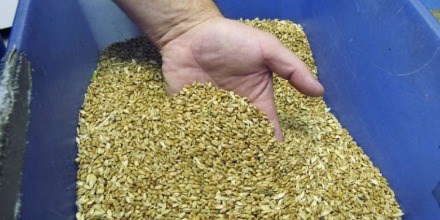Producer payment security is not a top-of-mind issue for producers until suddenly a grain buyer runs into financial difficulty and they aren’t paid for their delivered grain. Even if you think this will never happen to you, the current system is still costing you money. There should be a better way.
In simple terms, grain buyers are required to buy insurance for grain on which payment to the producer hasn’t been made. Administered by the Canadian Grain Commission, this security is meant to compensate producers when a buyer is unable to pay.
One of the most recent examples was ILTA Grain, a company with state-of-the-art assets in Saskatchewan. In that case, security was adequate to pay eligible producers. However, some producers with deferred grain cheques were not compensated.
Producer payment security only applies for 90 days from time of delivery or 30 days from issuance of a cheque. Once your deferred cheque is more than a month old, you’re out of luck.
If you’re a producer that defers grain cheques, that first month is costing grain companies money. Yes, they have the use of your money, but this is also an unpaid bill for which they have to purchase insurance.
Some buyers, particularly in the pulse and specialty crop business purposely delay payments and that’s always a worrisome prospect.
Producers delivering Canary seed to ILTA were also out of luck because at that time Canary seed was not an eligible crop under the Canada Grains Act. That omission has now been rectified.
The 90 days from time of delivery restriction almost caught me a number of years ago. I delivered kabuli chickpeas to a processor/buyer with the understanding that the small 7 mm seed would be delivered back to me for planting with the larger sizes being sold.
Naturally, this was all going to take some time. Eventually, I got the 7 mm seed, but imagine my surprise when I asked about payment for the balance and was told the company could not pay. Luckily, I was just within the 90-day delivery window and received full compensation through the Canadian Grain Commission.
While the payment security system seems to work if you’re within the timelines, it’s costing grain companies a lot of money. Guess who ultimately pays that cost through reduced grain prices.
Insurance of all kinds is getting more costly and interest rates are higher than they’ve been for a long time, so the expense is a big deal even though producers don’t directly see the cost.
Over the years, various other methods of providing payment security have been studied and discussed, but nothing has changed. Here’s an idea for a better system. The idea comes from talking to people at the Canadian Grain Commission about possibilities.
The CGC has a surplus of over $130 million built up by setting fees and underestimating grain volumes a number of years ago. What if $40 million of that was used for a contingency fund, seed money to start a payment security program that wouldn’t be entirely based on buying private insurance?
Observers say a contingency fund would require federal legislation, but this could be done without opening up the entire Canada Grains Act, which has been in a state of perpetual delay and would be quite a can of worms.
Grain buyers would all have to contribute a small amount each year to build the fund and replenish it in the event of payments. The biggest problem may be finding an equitable way to determine grain buyer contributions.
Large established grain companies do a lot of volume, but are typically secure financially. Most of the financial failures over the years have come from pulse and specialty crop companies. Feed grain buyers such as hog barns have also had failures.
It would take a lot of discussion to make all the details palatable, but it should be a lot less expensive way to provide payment security. And it would be a good use for some of the surplus CGC funds.


